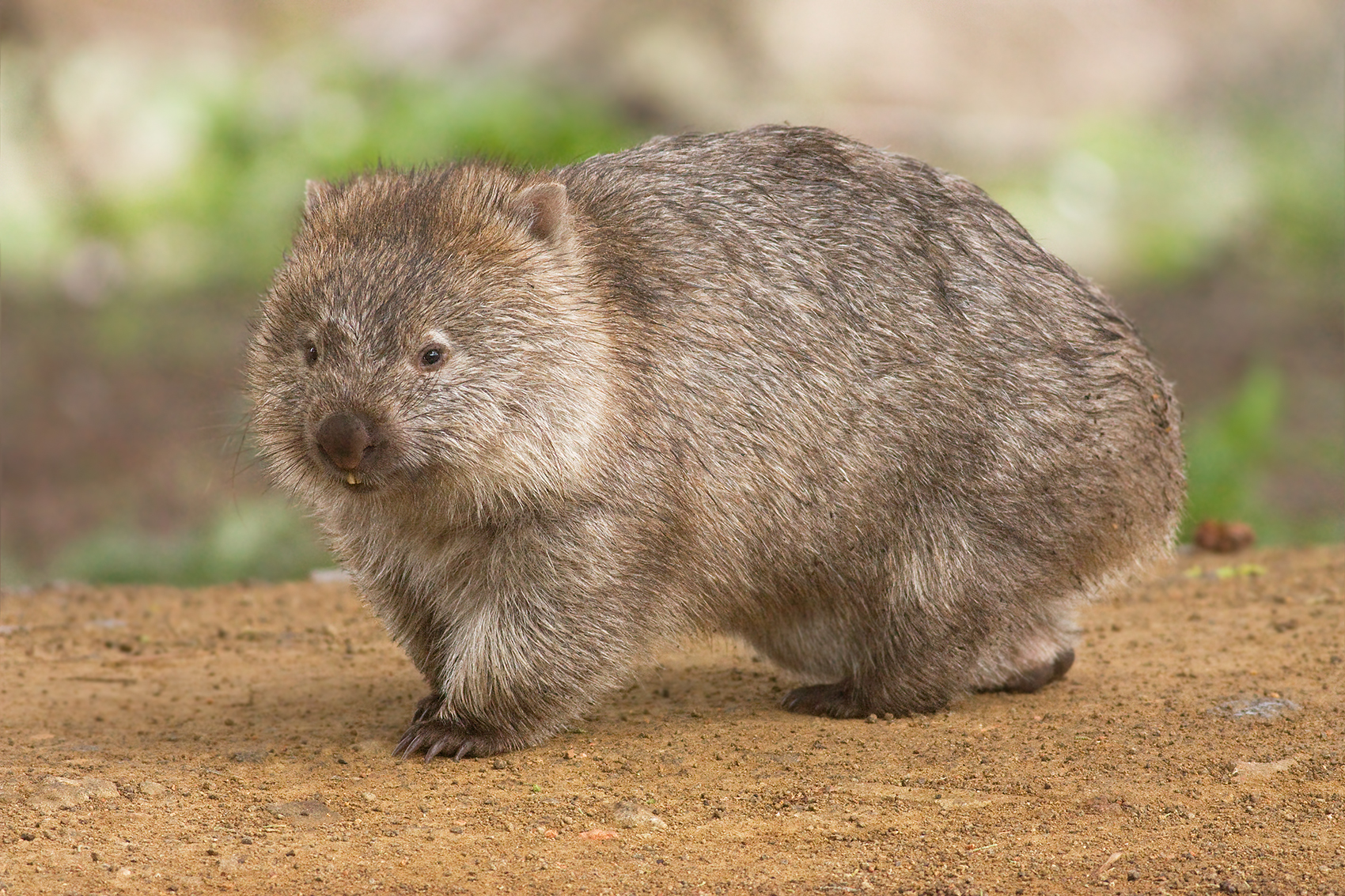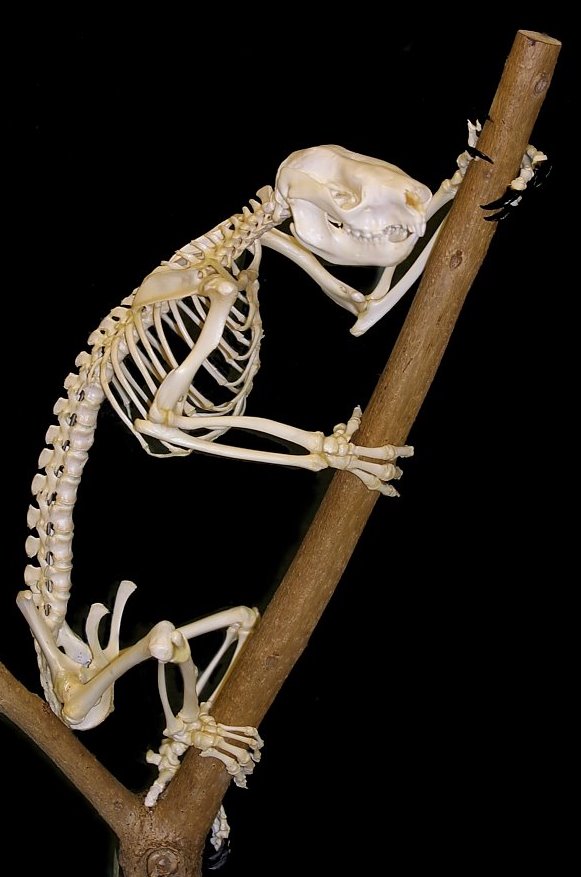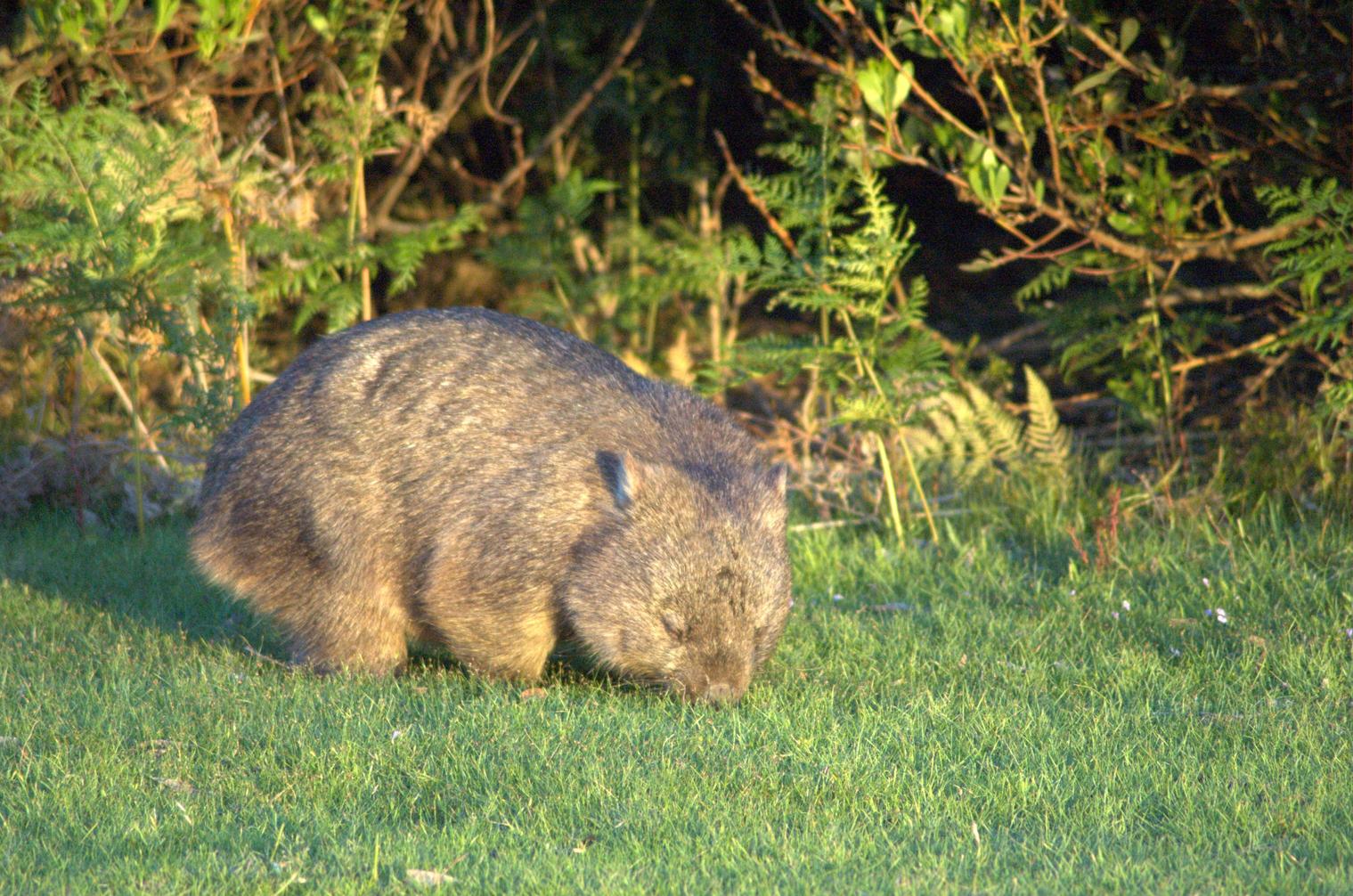|
Vombatiformes
The Vombatiformes are one of the three suborders of the large marsupial order Diprotodontia. Seven of the nine known families within this suborder are extinct; only the families Phascolarctidae, with the koala, and Vombatidae, with three extant species of wombat, survive. Among the extinct families are the Diprotodontidae, which includes the rhinoceros sized ''Diprotodon'', believed to be the largest marsupials ever, as well as the "marsupial lions" Thylacoleonidae and "marsupial tapirs" Palorchestidae. "Vombatiformes" is neo-Latin for "wombat-shaped things", and took its name from its type family. The suborder Vombatiformes, with its closely related members and their compact body form, contrasts with the other two diprotodont suborders, the Macropodiformes: kangaroos, wallabies, and the quokka; and the Phalangeriformes: possums, including the gliders such as the wrist-winged gliders. The koala and wombats are believed by many biologists to share a common ancestor and to have ... [...More Info...] [...Related Items...] OR: [Wikipedia] [Google] [Baidu] |
Diprotodon
''Diprotodon'' (Ancient Greek: "two protruding front teeth") is an extinct genus of marsupial from the Pleistocene of Australia, containing one species, ''D. optatum''. The earliest finds date to 1.77 million to 780,000 years ago, but most specimens are dated to after 110,000 years ago. Its massive fossils were first unearthed in 1830 in Wellington Caves, New South Wales, before any serious scientists were active on the continent, and were variably guessed to belong to rhinos, elephants, hippos, or dugongs. ''Diprotodon'', formally described by Sir Richard Owen in 1838, was the first named Australian fossil creature, and set Owen on a path to becoming the foremost authority of his time on other marsupials and Australian megafauna so enigmatic to European science. ''Diprotodon'' is the largest known marsupial to have ever lived, far dwarfing its closest living relatives, wombats and koalas. It grew as large as at the shoulders, over from head to tail, and possibly almost in w ... [...More Info...] [...Related Items...] OR: [Wikipedia] [Google] [Baidu] |
Diprotodontia
Diprotodontia (, from Greek "two forward teeth") is the largest extant order of marsupials, with about 155 species, including the kangaroos, wallabies, possums, koala, wombats, and many others. Extinct diprotodonts include the hippopotamus-sized ''Diprotodon'', and ''Thylacoleo'', the so-called "marsupial lion". Characteristics Living diprotodonts are almost all herbivores, as were most of those that are now extinct. A few insectivorous and omnivorous diprotodonts are known, and the Potoridae are almost unique among vertebrates in being largely fungivorous, but these seem to have arisen as relatively recent adaptations from the mainstream herbivorous lifestyle. The extinct thylacoleonids ("marsupial lions") are the only known group to have exhibited carnivory on a large scale. Diprotodonts are restricted to Australasia. The earliest known fossils date to the late Oligocene, but their genesis certainly lies earlier than this, as large gaps occur in Australia's fossil record, wi ... [...More Info...] [...Related Items...] OR: [Wikipedia] [Google] [Baidu] |
Koala
The koala or, inaccurately, koala bear (''Phascolarctos cinereus''), is an arboreal herbivorous marsupial native to Australia. It is the only extant representative of the family Phascolarctidae and its closest living relatives are the wombats. The koala is found in coastal areas of the mainland's eastern and southern regions, inhabiting Queensland, New South Wales, Victoria, and South Australia. It is easily recognisable by its stout, tailless body and large head with round, fluffy ears and large, spoon-shaped nose. The koala has a body length of and weighs . Fur colour ranges from silver grey to chocolate brown. Koalas from the northern populations are typically smaller and lighter in colour than their counterparts further south. These populations possibly are separate subspecies, but this is disputed. Koalas typically inhabit open ''Eucalyptus'' woodland, as the leaves of these trees make up most of their diet. Because this eucalypt diet has limited nutritional an ... [...More Info...] [...Related Items...] OR: [Wikipedia] [Google] [Baidu] |
Phascolarctos Cinereus
The koala or, inaccurately, koala bear (''Phascolarctos cinereus''), is an arboreal herbivorous marsupial native to Australia. It is the only extant representative of the family Phascolarctidae and its closest living relatives are the wombats. The koala is found in coastal areas of the mainland's eastern and southern regions, inhabiting Queensland, New South Wales, Victoria, and South Australia. It is easily recognisable by its stout, tailless body and large head with round, fluffy ears and large, spoon-shaped nose. The koala has a body length of and weighs . Fur colour ranges from silver grey to chocolate brown. Koalas from the northern populations are typically smaller and lighter in colour than their counterparts further south. These populations possibly are separate subspecies, but this is disputed. Koalas typically inhabit open ''Eucalyptus'' woodland, as the leaves of these trees make up most of their diet. Because this eucalypt diet has limited nutritional and calo ... [...More Info...] [...Related Items...] OR: [Wikipedia] [Google] [Baidu] |
Thylacoleonidae
Thylacoleonidae is a family of extinct meat-eating marsupials from Australia, referred to as marsupial lions. The best known is ''Thylacoleo carnifex'', also called the marsupial lion. The clade ranged from the Late Oligocene to the Pleistocene, with some species the size of a possum and others as large as that of a leopard. As a whole, they were largely arboreal, in contrast to the mostly terrestrial dasyuromorphs ( quolls only recently took the niches vacated by small thylacoleonids), monitor lizards and mekosuchines. Hypercarnivory was also found in another order of marsupials, the dasyuromorph family Thylacinidae that included the Tasmanian tiger '' Thylacinus cynocephalus'' that became extinct in the twentieth century. Description A diprotodontian family allied to the Vombatiformes, mammals that radiated and diversified in the Oligocene to Miocene. The thylacoleonid genera exhibit specialised dentition that allowed them to kill prey larger than themselves. The ear ... [...More Info...] [...Related Items...] OR: [Wikipedia] [Google] [Baidu] |
Wombat
Wombats are short-legged, muscular quadrupedal marsupials that are native to Australia. They are about in length with small, stubby tails and weigh between . All three of the extant species are members of the family Vombatidae. They are adaptable and habitat tolerant, and are found in forested, mountainous, and heathland areas of southern and eastern Australia, including Tasmania, as well as an isolated patch of about in Epping Forest National Park in central Queensland. Etymology The name "wombat" comes from the now-nearly extinct Dharug language spoken by the aboriginal Dharug people, who originally inhabited the Sydney area. It was first recorded in January 1798, when John Price and James Wilson, a white man who had adopted aboriginal ways, visited the area of what is now Bargo, New South Wales. Price wrote: "We saw several sorts of dung of different animals, one of which Wilson called a "Whom-batt", which is an animal about 20 inches high, with short legs and a th ... [...More Info...] [...Related Items...] OR: [Wikipedia] [Google] [Baidu] |
Phascolarctidae
The Phascolarctidae (''φάσκωλος (phaskolos)'' - pouch or bag, ''ἄρκτος (arktos)'' - bear, from the Greek ''phascolos'' + ''arctos'' meaning pouched bear) is a family of marsupials of the order Diprotodontia, consisting of only one extant species, the koala, and six well-known fossil species, with another five less well known fossil species, and two fossil species of the genus ''Koobor'', whose taxonomy is debatable but are placed in this group. The closest relatives of the Phascolarctidae are the wombats, which comprise the family Vombatidae. The fossil record of the family dates back to the Middle Miocene or Late Oligocene. Classification Family Phascolarctidae * Genus '' Nimiokoala'' **Riversleigh rainforest koala - ''Nimiokoala greystanesi'' * Genus ''Invictokoala'' **''Invictokoala monticola'' * Genus ''Madakoala'' **''Madakoala robustus'' **''Madakoala wellsi'' **''Madakoala devisi'' * Genus ''Litokoala'' **''Litokoala garyjohnstoni'' **''Litokoala kutjam ... [...More Info...] [...Related Items...] OR: [Wikipedia] [Google] [Baidu] |
Maradidae
''Marada arcanum'' is a species of Vombatiformes discovered in 2001 at the Oligocene Hiatus Site at Australian Fossil Mammal Sites (Riversleigh), Riversleigh. It is the only member of the genus ''Marada''. It exhibits plesiomorphic and apomorphic features making the determination of its taxonomic placement difficult. It has been placed within its own family, Maradidae. The specimen consists of the right dentary, with the first incisor but missing the crown (tooth), crown, the whole of the horizontal ramus with intact premolar three and Molar (tooth), molars one to four. The posterior is missing the coronoid process of the mandible, coronoid process, the articular condyle and the angular process. The new species, genus, and family were described in 2007 by the Australian palaeontologist Karen Black (palaeontologist), Karen Black References {{Taxonbar, from1=Q6540375, from2=Q18608866, from3=Q12071624 Prehistoric vombatiforms Riversleigh fauna Fossil taxa described in 2007 ... [...More Info...] [...Related Items...] OR: [Wikipedia] [Google] [Baidu] |
Palorchestidae
Palorchestidae is an extinct family of diprotodont marsupials whose members are sometimes referred to as marsupial tapirs due to their superficial similarity to true tapirs. Genera The family consists of the following four genera: * ''Propalorchestes'' (Murray, 1986) * ''Ngapakaldia'' (Stirton, 1967) * ''Palorchestes ''Palorchestes'' ("ancient leaper or dancer") is an extinct genus of terrestrial animal, terrestrial, herbivorous marsupials of the family (biology), family Palorchestidae. The genus was endemic to Australia, living from the Miocene through to th ...'' (Owen, 1873) * '' Pitikantia dailyi'' (Stirton, 1967) References External links * Prehistoric vombatiforms Prehistoric mammals of Australia Miocene marsupials Pliocene marsupials Pleistocene marsupials Clawed herbivores Chattian first appearances Pleistocene extinctions Prehistoric mammal families {{Diprotodont-stub ... [...More Info...] [...Related Items...] OR: [Wikipedia] [Google] [Baidu] |
Marsupial
Marsupials are any members of the mammalian infraclass Marsupialia. All extant marsupials are endemic to Australasia, Wallacea and the Americas. A distinctive characteristic common to most of these species is that the young are carried in a pouch. Marsupials include opossums, Tasmanian devils, kangaroos, koalas, wombats, wallabies, bandicoots, and the extinct thylacine. Marsupials represent the clade originating from the last common ancestor of extant metatherians, the group containing all mammals more closely related to marsupials than to placentals. They give birth to relatively undeveloped young that often reside in a pouch located on their mothers' abdomen for a certain amount of time. Close to 70% of the 334 extant species occur on the Australian continent (the mainland, Tasmania, New Guinea and nearby islands). The remaining 30% are found in the Americas—primarily in South America, thirteen in Central America, and one species, the Virginia opossum, in Nort ... [...More Info...] [...Related Items...] OR: [Wikipedia] [Google] [Baidu] |
Diprotodontidae
The Diprotodontidae are an extinct family of large herbivorous marsupials, endemic to Australia and New Guinea during the Oligocene through Pleistocene periods from 28.4 million to 40,000 years ago. The family consisted of large quadrupedal terrestrial browsers, notably including the largest marsupial that ever lived, the rhino-sized '' Diprotodon''. The group first appeared during the Late Oligocene, with representatives that were mostly sheep-sized, and substantially diversified beginning during the Late Miocene, reaching an apex of diversity during the Pliocene with seven genera, likely due to the increase of open forested landscapes. The last known members of the group including ''Diprotodon'' and '' Zygomaturus'' from mainland Australia, and '' Hulitherium'' and ''Maokopia ''Maokopia'' is an extinct genus of Zygomaturinae from the Late Pleistocene of Irian Jaya, New Guinea. It is known from a partial skull and was a comparatively small species of diprotodontid, wei ... [...More Info...] [...Related Items...] OR: [Wikipedia] [Google] [Baidu] |
Wynyardiidae
Wynyardiidae is an extinct family of possum-like marsupials from the early Miocene of Wynyard in Tasmania, long been considered to display skeletal features that are intermediate between the primitive polyprotodont and the advanced diprotodont marsupials. ''Wynyardias brain is clearly phalangeroid in external morphology, resembling closely that of the extant phalangerid ''Trichosurus vulpecula''. This indicates that by 21 million years ago, an unambiguously phalangerid brain had evolved within the Diprotodonta family, indicating that both groups had a common ancestor prior to this date. Research on ''Wynyardia bassianas relationship with fossil phalangerid species In biology, a species is the basic unit of classification and a taxonomic rank of an organism, as well as a unit of biodiversity. A species is often defined as the largest group of organisms in which any two individuals of the appropriate s ... of the Miocene is an ongoing process. Species * †Wynyardi ... [...More Info...] [...Related Items...] OR: [Wikipedia] [Google] [Baidu] |

_BHL21155651.jpg)




_(white_background).jpg)